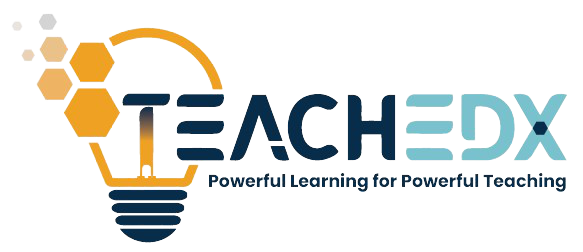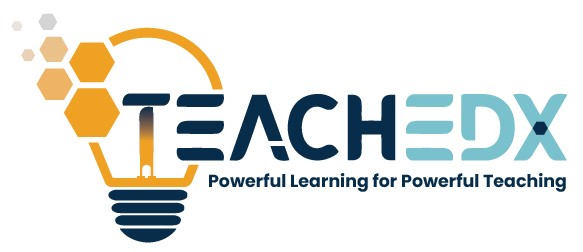The Backwards Design Approach to Lesson Planning
- Venessa Powell
- January 15, 2024
- No Comments
The backwards design approach to lesson planning is a powerful instructional planning approach. As educators, we often find ourselves caught up in the day-to-day demands of teaching that give us little time to innovate, but by taking a step back and approaching lesson planning from a new perspective, we can create more effective and meaningful learning experiences for our students.
What is Backwards Design?
Backwards design is an instructional design approach that starts with the end goal in mind. Instead of beginning with activities and content, educators using backwards design start by identifying the desired learning outcomes and then work backwards to develop instruction and assessments that will help students achieve those goals.
The Three Stages of Backwards Design
- Identify the Desired Results: The first stage of the backwards design approach to lesson planning involves identifying what you want your students to know, understand, and be able to do by the end of the lesson, unit, or course. This involves setting clear learning objectives and determining the essential knowledge and skills that students should acquire.
- Determine Acceptable Evidence: Once the desired results have been identified, the next step is to consider how you will know if students have achieved those results. This stage involves designing assessments and other forms of evidence that will allow you to measure student learning and understanding.
- Plan Learning Experiences and Instruction: With the end goals and assessment methods in mind, the final stage of backwards design involves planning the learning experiences and instruction that will enable students to reach the desired outcomes. This may involve selecting or creating instructional materials, designing activities, and considering how to differentiate instruction to meet the diverse needs of students.
A Backwards Design Lesson Planning Example
Mr Daley is a social studies teacher who is planning to teach a unit on types of government and how they manage a country’s resources. He wants to use the backwards design approach to lesson planning for this unit. The following describes some of the steps Mr Daley could take.
Identify the Desired Results
Mr Daley would begin by listing his learning outcomes. Based on the objectives listed in his curriculum, the students should be able to:
- List different types of government and distinguish between them.
- Explain how different types of government are formed and maintained.
- Draw organizational charts to illustrate the flow of power within a named type of government.
- Describe the role(s) of each member of government within a named type of government.
- Explain how different types of resources are managed within a named type of government.
- Determine possible outcomes of described events given the type of government within a real-world context.
Determine Acceptable Evidence
Mr Daley would then consider the types of assessments he would use to determine students’ mastery of these objectives. One assessment he has in mind is a performance task where students examine a case study of a new country being established. Students would work in groups of four, randomly selecting characteristics of the country from a bag/jar. These characteristics could include natural resources, demographics of the population, existing infrastructure, climatic zone, etc. By randomly selecting characteristics, each group would generate a profile of a country unlike one that currently exists. This elevates the cognitive rigour of the task as they cannot mimic existing governments or Google solutions. The students would be required to prepare a multi-media presentation about their recommended type of government, using the management of described events to justify their selection.
Plan Learning Experiences and Instruction
With this assessment in mind, Mr Daley would have to consider now the types of activities he would need to do in class to prepare students to manage such an assessment. One activity he could consider is to have students scan news articles and government websites related to select countries (each with a different type of government) to see how they manage similar situations. For example, they could examine how these governments address the distribution of aid during times of natural disasters. This sort of activity would help prepare the students to work in groups as well as learn how to synthesize information from multiple sources for a singular purpose.
Benefits of the Backwards Design Approach to Lesson Planning
Backwards design offers several benefits for both educators and students. By starting with the end in mind, educators can ensure that their instruction is focused and purposeful, leading to greater coherence and alignment between learning objectives, assessments, and instruction. This approach also encourages a focus on understanding and mastery of key concepts and skills, rather than simply covering a set of topics.
Furthermore, backwards design can help students understand the purpose and relevance of their learning, as they are aware of the specific goals they are working towards. This can lead to increased student motivation and engagement, as well as a deeper and more meaningful learning experience.
Implementing the Backwards Design Approach to Lesson Planning in Your Teaching
So, how can you implement backwards design in your teaching practice? Here are a few key steps to get started:
- Clarify the desired learning outcomes for your lesson, unit, or course. What knowledge, skills, and understandings do you want your students to take away from the learning experience? Consider as well different levels of cognitive rigour. Students should be able to recall, explain, apply and create to show different levels of understanding. You can use cognitive rigour taxonomies such as the revised Bloom’s Taxonomy of Cognitive Learning or Webb’s Depth of Knowledge.
- Determine how you will assess student learning. What evidence will demonstrate that students have achieved the desired outcomes? Think about how the content you plan to teach is used in real-world contexts and generate assessments aligned to these ways. Consider a variety of assessment methods, such as tests, projects, presentations, and discussions. Include both formative and summative assessments done by self, peers and teacher.
- Plan the learning experiences and instruction that will help students achieve the desired outcomes. What activities, resources, and instructional strategies will best support student learning and understanding? Choose instructional strategies that are student-centred and require active learning. Plan your questions ahead of the lesson to ensure you balance lower-order and higher-order thinking skills. Get students involved by having them generate and curate the knowledge required. Tap into their interests and strengths, using them to elevate engagement.
By following these steps, you can create more intentional and impactful learning experiences for your students, ultimately leading to improved learning outcomes.
Conclusion
Backwards design is a powerful approach to lesson planning that can help you create more focused, coherent, and meaningful learning experiences for your students. By starting with the end goals in mind and working backwards to develop instruction and assessments, you can ensure that your teaching is purposeful and aligned with the desired learning outcomes.
Articles you May Also Find Useful:
Like this article?

Venessa Powell
I never wanted to become a teacher. As a matter of fact, anybody who knew me knew that I was set on becoming a graphic designer. Some would say it was by divine intervention others may call it the universe redirecting me, but circumstances led me to teachers’ college at the end of high school where I pursued secondary mathematics education.


